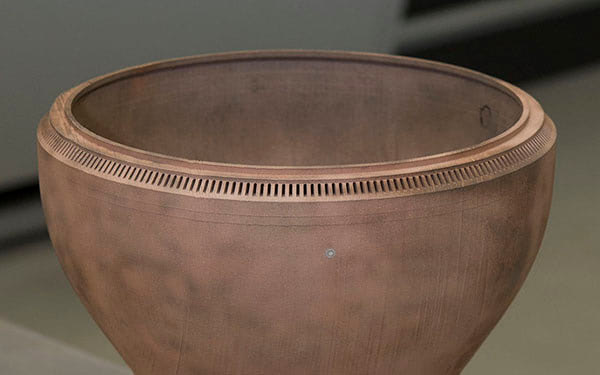Hexcel Launches HexPEKK SLS Material with EM Shielding and Radar Absorption
Hexcel, an advanced materials supplier, has recently launched HexPEKK EM, formulated specifically to meet the static electricity management, electromagnetic shielding, and radiation absorption requirements of advanced aircraft applications.
This high-performance carbon fiber-blended PEKK material is specially engineered to be used in commercial aerospace, defense, and military aircraft. PEKK is a very robust material and carbon fiber makes parts stiffer and lighter, so beyond its anti-static and radar absorbing qualities, HexPEKK is also chemically resistant, temperature resilient, incredibly strong, and lightweight, all important traits for aerospace applications.
The management of static electricity dissipation, electromagnetic interference, and radiation absorption is extremely important in the design of all air vehicles. The introduction of this advanced additive manufacturing material will enable the fabrication of extremely complex aerostructures with unparalleled structural and electrical functionality. It significantly reduces weight and cost while providing unlimited design flexibility. Lawrence Varholak, Vice President of Additive Manufacturing at Hexcel
Hexcel expects to see the novel material used in commercial and military airplanes, drones, and helicopters on exterior surfaces and leading edges, electronics enclosures, air inlets, and the structures of cockpits. Because the parts don’t have to go through post processes of coatings to get their unique EM characteristics, they come out of the printer flight-ready and can be instantly installed. HexPEKK is designed to be used in Selective Laser Sintering, which further removes post processing because that technology does not require the use of support pillars. The significant reductions in the time for manufacturing and post processing make the material more cost effective than traditional parts. PBF parts are also isotropic, meaning they’re equally strong in all directions.
These kinds of materials are critical for aerospace components because their sensors and communication equipment are so sensitive that any surge in voltage caused by radiation leakage can cause interference and errors in their readings. The electrical conductivity of HexPEKK allows it to absorb and discharge those surges to protect the functionality of the equipment. Of course, being able to 3D print such a material in highly complex geometries for an industry where geometric complexity is the norm is a huge value add.
Original Source: https://3dprinting.com/news/hexcel-launches-hexpekk-sls-material-with-em-shielding-and-radar-absorption/

